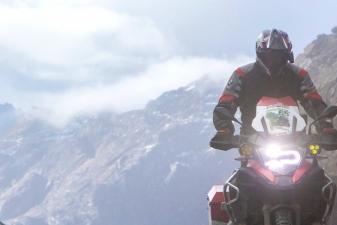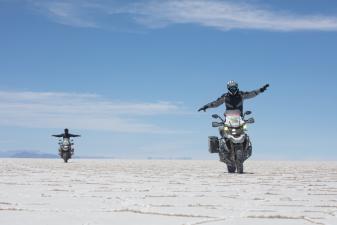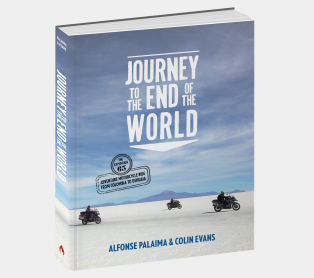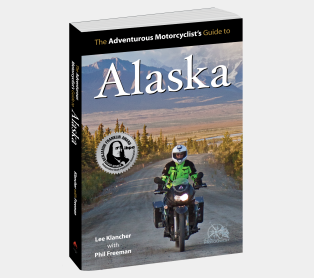They Call it a Rainforest for a Reason
Sloshing Across the Amazon

Riding the length of South America on an adventure motorcycle is no walk in the park. Navigation can go awry, and unpredictable weather conditions turn even benign brooks into raging rivers, all in the blink of an eye. This excerpt from Colin Evans and Alfonse Palaima's book, Journey to the End of the World, details an especially wet section of their thrilling Expedition 65 voyage to the bottom of South America.
The geography of South America is pretty simple if you think about it; the continent only has three parts. There’s the Amazon, the Andes, and the Rest. All right, it might be a bit more complicated than that, since the Rest is made up of the drier parts of Brazil, plus the Pampas in Argentina, plus Patagonia. But still pretty simple. For Expedition 65 we decided to essentially travel down the spine of the Andes, from the top of South America to the bottom, or, north to south. We would, however, be zigzagging a bit and dropping into Amazonia a couple of times. On this day we opted to head east from Baños in Ecuador, and across South America’s continental divide in the dramatic canyon along the Pastaza River, which is one of 1,100 tributaries that drain into the Amazon.
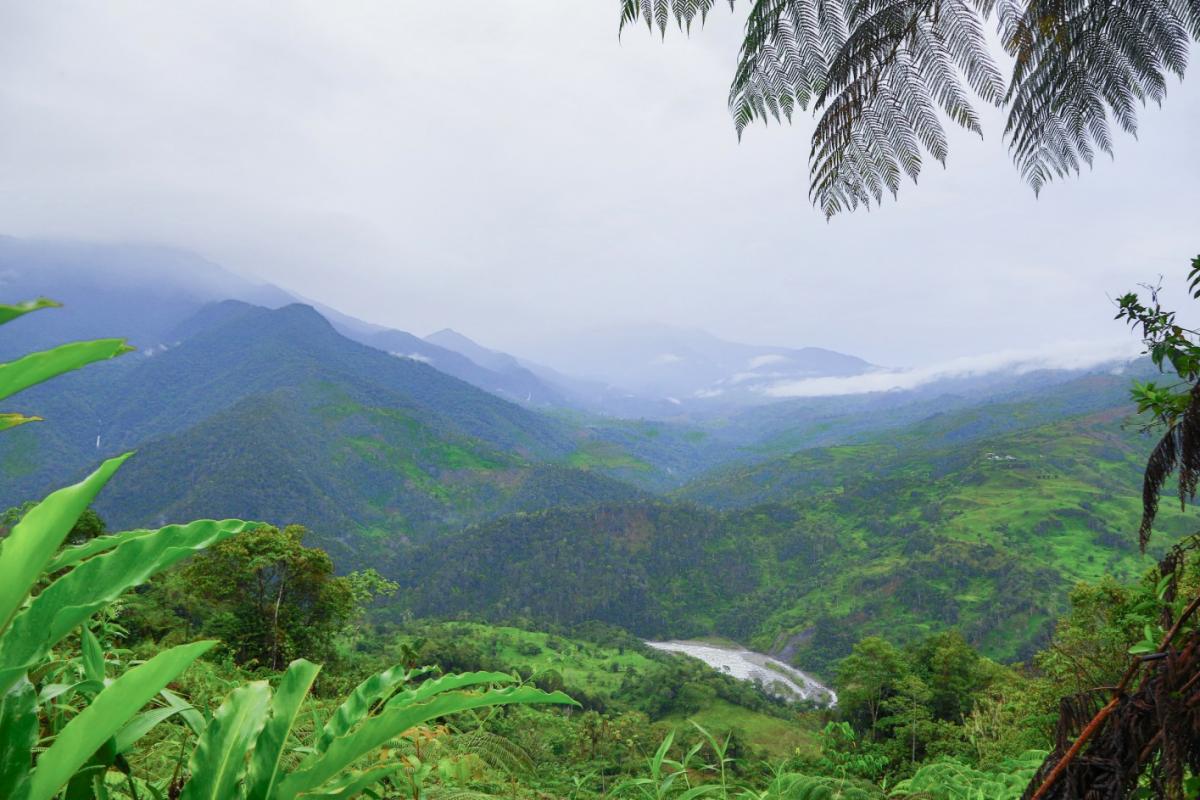
The weather we encountered on this stretch was absolutely foul—we battled heavy rain for hours as we made our way south through the rainforest and toward Cuenca. The rain went from acute to chronic but never stopped, and all the rivers were in full flow, bubbling over rocks and ripping up sediment in a brown swirling soup. The rain that didn’t expend its energy soaking us to the bone would shortly end up in this river, then the Amazon, and eventually spill out into the Atlantic Ocean about 5,000 miles downstream.
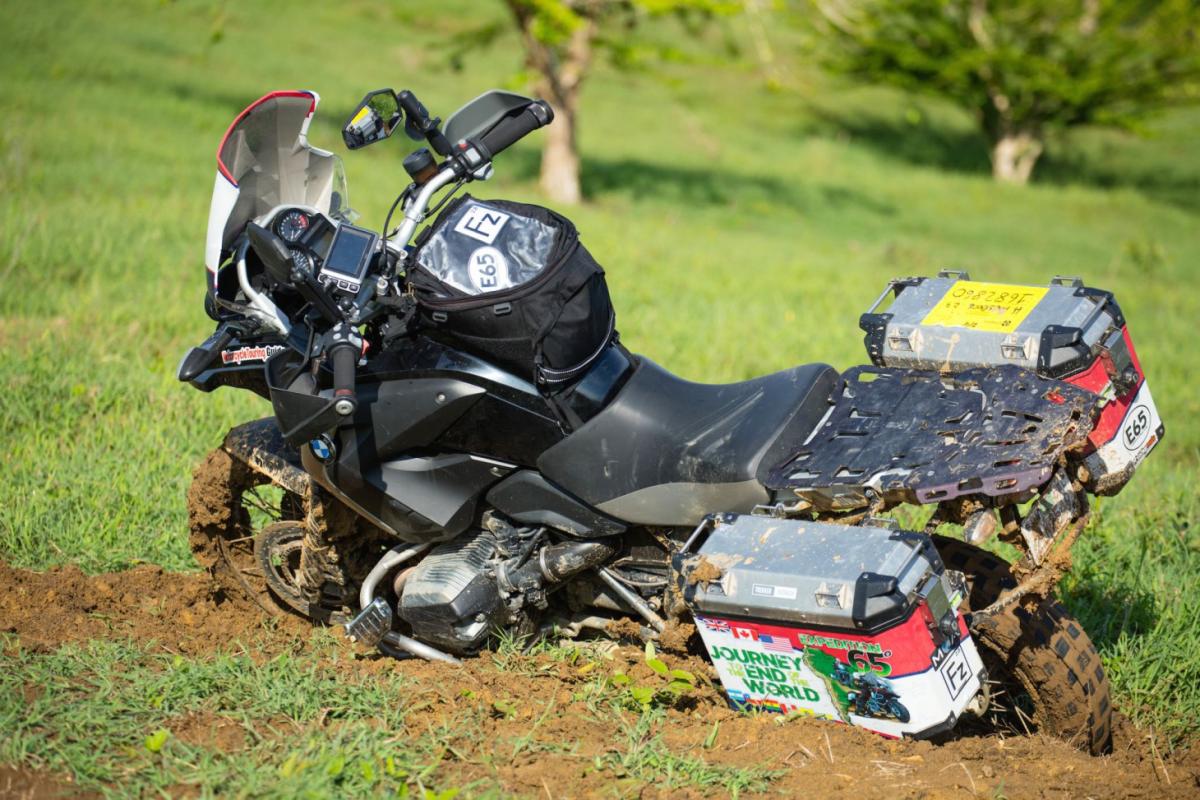
The first person to make this same journey was Francisco de Orellana, in 1541. He set off in search of food for Pizarro’s marauding conquistadors but got mesmerized by the potential of what he saw, and then, as they all did, took off to seek out the mythic golden city of El Dorado, thinking it was in the nearby jungle. A few months later his party was attacked by an indigenous group that claimed a female god as their leader. He was so convinced his party was being ambushed by women, he named the river after the mythical women warríors of ancient Greece— the Amazons. After a hard eight months in the jungle, he arrived at the Atlantic, thus becoming the first European to travel the length of the Amazon. No European would manage to do this again for a hundred years.
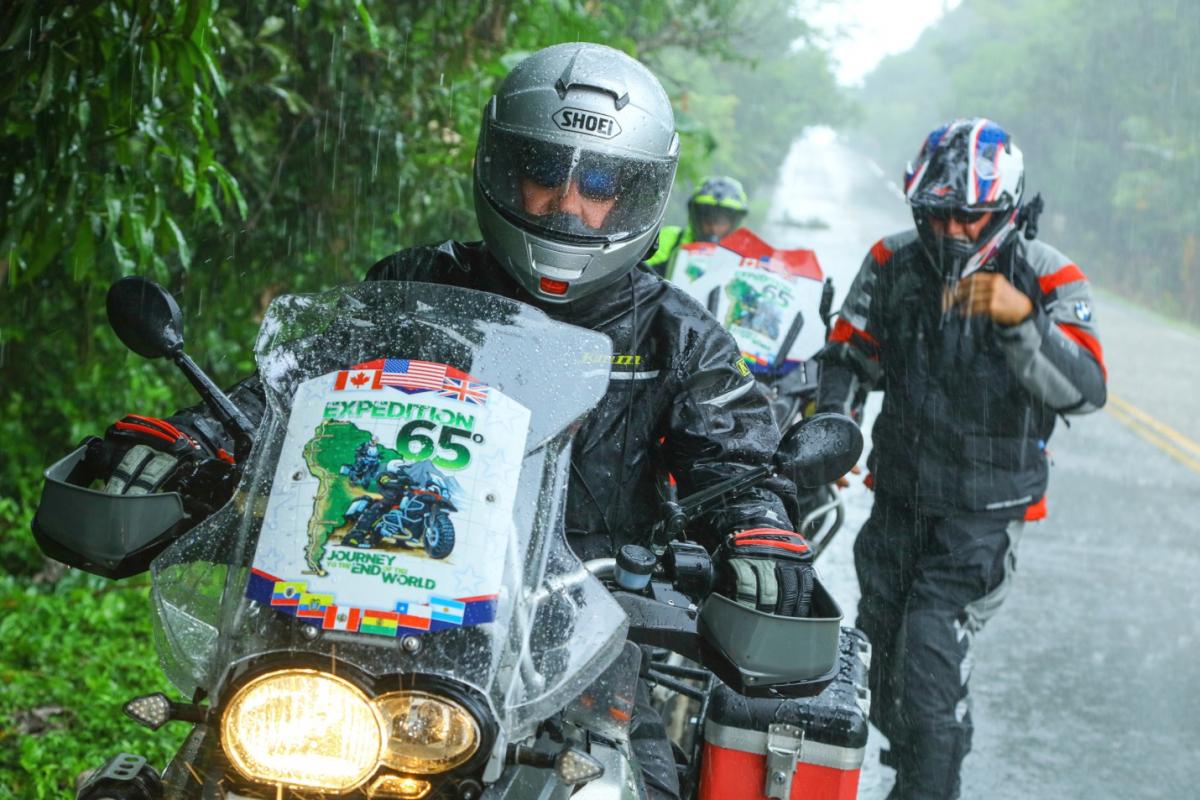
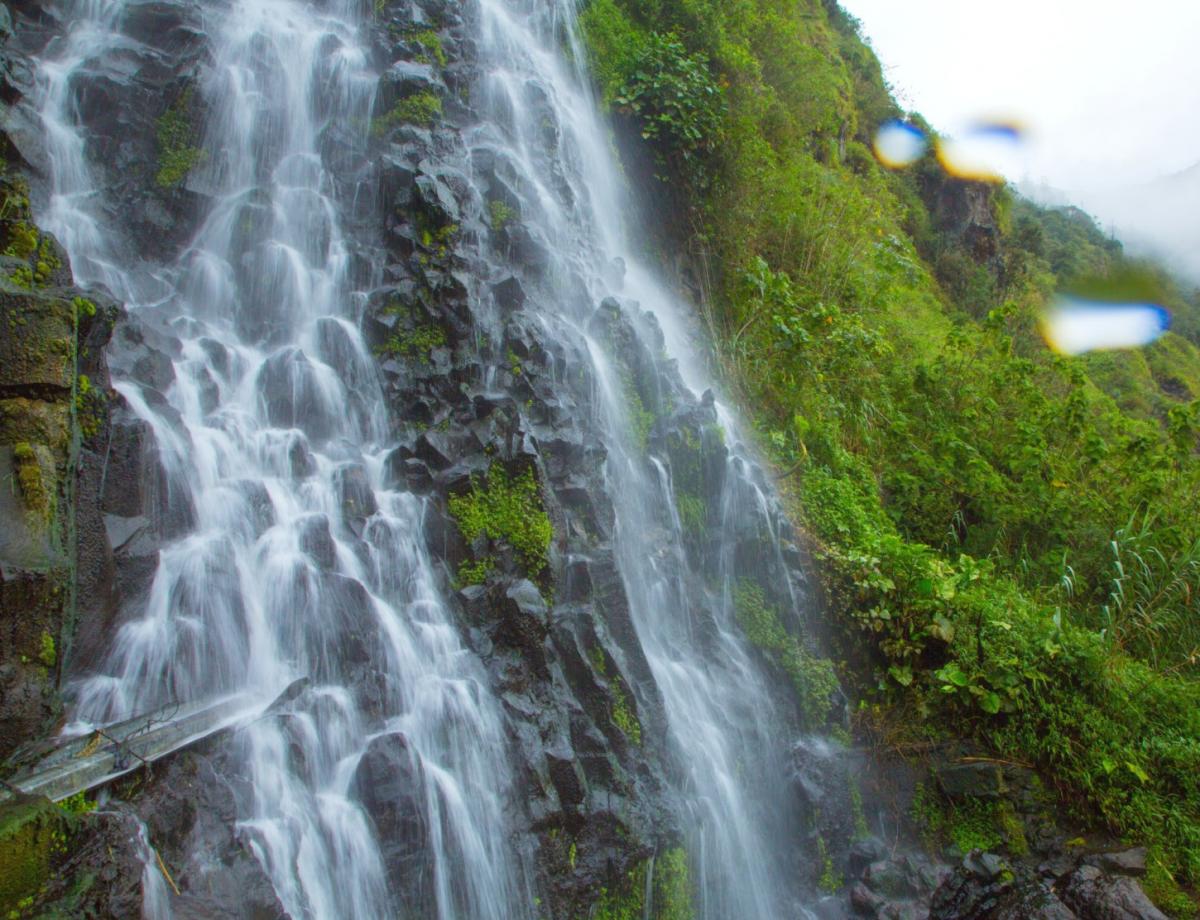
More trials and tribulations and bold, beautiful photos from the whole journey in South America can be found in Journey to the End of the World from Octane Press. Also be sure to check out the Expedition 65 video series on YouTube! Watch the trailer here.
The geography of South America is pretty simple if you think about it; the continent only has three parts. There’s the Amazon, the Andes, and the Rest. All right, it might be a bit more complicated than that, since the Rest is made up of the drier parts of Brazil, plus the Pampas in Argentina, plus Patagonia. But still pretty simple. For Expedition 65 we decided to essentially travel down the spine of the Andes, from the top of South America to the bottom, or, north to south. We would, however, be zigzagging a bit and dropping into Amazonia a couple of times. On this day we opted to head east from Baños in Ecuador, and across South America’s continental divide in the dramatic canyon along the Pastaza River, which is one of 1,100 tributaries that drain into the Amazon.

The weather we encountered on this stretch was absolutely foul—we battled heavy rain for hours as we made our way south through the rainforest and toward Cuenca. The rain went from acute to chronic but never stopped, and all the rivers were in full flow, bubbling over rocks and ripping up sediment in a brown swirling soup. The rain that didn’t expend its energy soaking us to the bone would shortly end up in this river, then the Amazon, and eventually spill out into the Atlantic Ocean about 5,000 miles downstream.

The first person to make this same journey was Francisco de Orellana, in 1541. He set off in search of food for Pizarro’s marauding conquistadors but got mesmerized by the potential of what he saw, and then, as they all did, took off to seek out the mythic golden city of El Dorado, thinking it was in the nearby jungle. A few months later his party was attacked by an indigenous group that claimed a female god as their leader. He was so convinced his party was being ambushed by women, he named the river after the mythical women warríors of ancient Greece— the Amazons. After a hard eight months in the jungle, he arrived at the Atlantic, thus becoming the first European to travel the length of the Amazon. No European would manage to do this again for a hundred years.


More trials and tribulations and bold, beautiful photos from the whole journey in South America can be found in Journey to the End of the World from Octane Press. Also be sure to check out the Expedition 65 video series on YouTube! Watch the trailer here.


